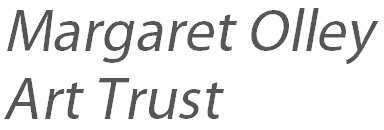One of the most beautiful books in the research library is Colour Prints of Hiroshige. It was given to the Armidale Teachers’ College library by Howard Hinton. It is number 24 of only 100 privately printed copies, produced by Beacon Press in 1937. It is a tall book, 42 cm high, and within its vellum cover are 83 pages with tipped in colour illustrations.
This book is one of several produced by P. Neville Barnett. His books were meticulously made. He acquired Japanese papers, vellum for the covers, wrote the text, and carefully chose the typeface fonts to be suitable to the subject material. And of course they were limited edition works, signed and numbered. This sort of book was often advertised to possible purchasers who bought a subscription copy prior to its being printed. Barnett often pasted in the illustrations himself, and when he was unable to acquire sufficient appropriate paper during World War II, the press run of a couple of his books was limited to less than 15 copies.
This book contains beautiful examples of Ukiyoe, Japanese woodblock printing of the Edo Period (1600-1868). Hiroshige, together with Hokusai, is among the best known exponents. And he is considered the last great artist of the period. Copies of this book are held at only six other libraries in Australia. The remaining copies may have been destroyed, or are in private collections. Barnett produced six titles that dealt with Japanese woodblock prints; all much sought after by collectors today.
Some bookman’s terms:
- Colophon – the particulars of printer, place and date of printing found at the end of early printed books. Privately printed, limited edition books are often signed and numbered on a separate page termed the colophon.
- Font – a full set of type of one style and size, containing the correct number of the various characters. In desktop publishing it is understood to be simply the typeface.
- Tipped in – means a single illustration (or leaf or errata slip) inserted in a book, usually with a narrow edge of paste against the inner edge.
- Ukiyo-e – a genre of Japanese art which flourished from the 17th through 19th centuries. Its artists produced woodblock prints and paintings of such subjects as female beauties; kabuki actors and sumo wrestlers; scenes from history and folk tales; travel scenes and landscapes; flora and fauna; and erotica.
- Vellum – calf skin dressed with alum and polished and not tanned like leather. Fine paper is sometimes said to have a vellum finish, usually soft and off white in colour.
- Wood block – a wood-engraving block of wood, usually box-wood, on which design for porting has been cut in relief.




